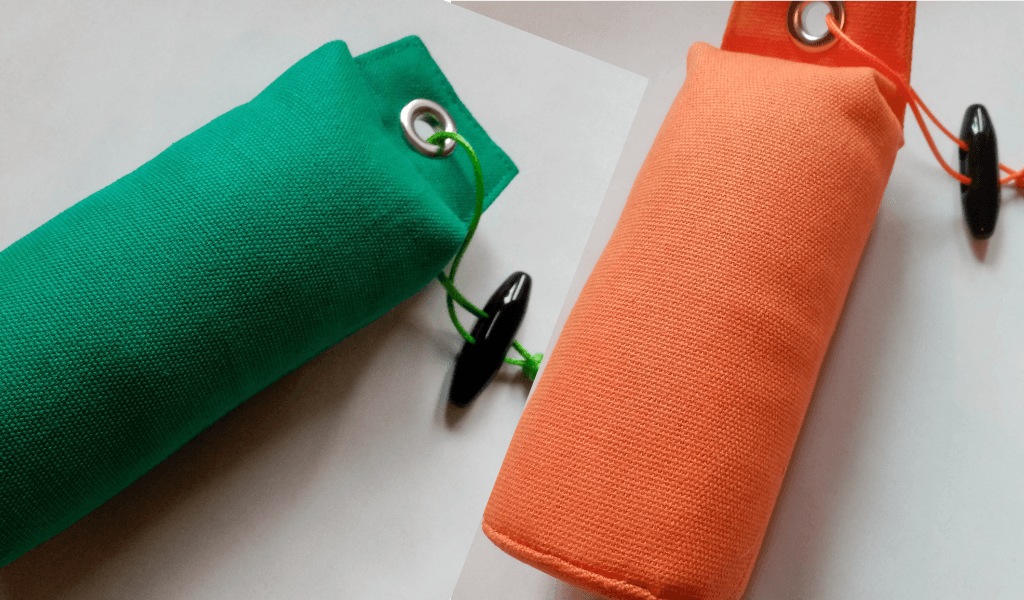Training dummies for gundogs
Choosing the Right Colours for Gundog Training Dummies
When training a gundog, choosing the right colours for gundog training dummies is crucial to effective learning and development.
The correct colours ensure your dog’s training experience aligns with natural conditions, building skills essential for successful fieldwork.
Here’s what to consider when selecting colours for training dummies.
1. Understand How Dogs See Colours
Dogs see colours differently from humans. While we perceive a full range of colours, dogs primarily see in shades of blue and yellow.
Reds and greens appear as shades of grey, meaning bright red or green dummies may not stand out as expected.
Choosing colours that your gundog can easily distinguish in different environments is essential for teaching accurate retrieval skills.
2. Training Environments and Contrast
The primary goal in dummy training is to replicate shooting scenarios, so the colour of the dummy should work with the training environment.
Here are key colour considerations based on typical training conditions:
- Grass and Woodland: Green and brown dummies can be challenging for dogs to spot in dense vegetation, and this can help the dog to learn to use and trust his sense of smell. For young or inexperienced dogs, consider white or blue dummies which are more visible and can help to prevent failures during training.
- Water Training: Visibility is critical in water, especially in muddy or reflective conditions. Bright colours like orange or yellow offer high contrast against water surfaces. Avoid white dummies in water, as they can blend with sunlight reflections, making the retrieve more difficult.
- Snow or Light-Coloured Terrains: For snowy or sandy terrains, darker colours like black or dark blue create strong contrast, ensuring the dummy is visible without relying solely on scent.
3. Age and Experience of the Gundog
For younger or less experienced gundogs, start with high-contrast colours like white or neon shades, which are easily visible and help build confidence in marking and retrieving.
As your dog becomes more experienced, gradually introduce colours that blend with the environment, encouraging it to use scent and memory rather than visual tracking alone.
4. Individual Dog Preferences
Some dogs may have personal preferences for certain colours. It’s worth experimenting with a few different dummy colours to see what your dog responds to best.
By catering to these preferences, you can enhance motivation and make training sessions more effective.
5. Dummy Material and Scent
Beyond colour, the material and scent of the dummy can influence your dog’s response.
Using dummies made from materials similar to those found in real life situations, such as fur or feather, can provide a realistic training experience.
Adding scent to the dummy, or choosing materials that hold scent well, can also strengthen your dog’s scenting skills.
6. Dummy Colour and Specific Skills
- Marking Training: For precise marking, use dummies in colours that stand out against the terrain. White is often ideal for clear visibility, helping the dog learn accurate sight-tracking.
- Blind Retrieves: Training with less-visible colours, like green or brown, encourages the dog to rely on your directional commands and its scenting abilities rather than visual cues. This is essential for teaching blind retrieves where the dog must follow instructions without sight.
7. Consistency in Dummy Training
Consistency in dummy colour and type throughout training is vital to avoid confusion.
By using the same colours and types during a specific training phase, you build clear associations, which helps your dog understand and retain each skill set.
Switching colours or types too often can disrupt progress and lead to confusion.
8. Seasonal Adjustments
Your gundog’s training dummy might need to change with the seasons.
For instance, orange or brown dummies may blend into the background of fallen leaves in autumn.
Adjusting dummy colours to match seasonal landscapes keeps training realistic and helps the dog adapt to changing environments.
The colour of your gundog’s training dummy can significantly impact training effectiveness.
Starting with high contrast and then introducing camouflaged colours as experience grows will set your gundog up for success in the field.
Remember that material, scent, and consistency play equally important roles, ensuring that your dog is comfortable and confident in its training.

